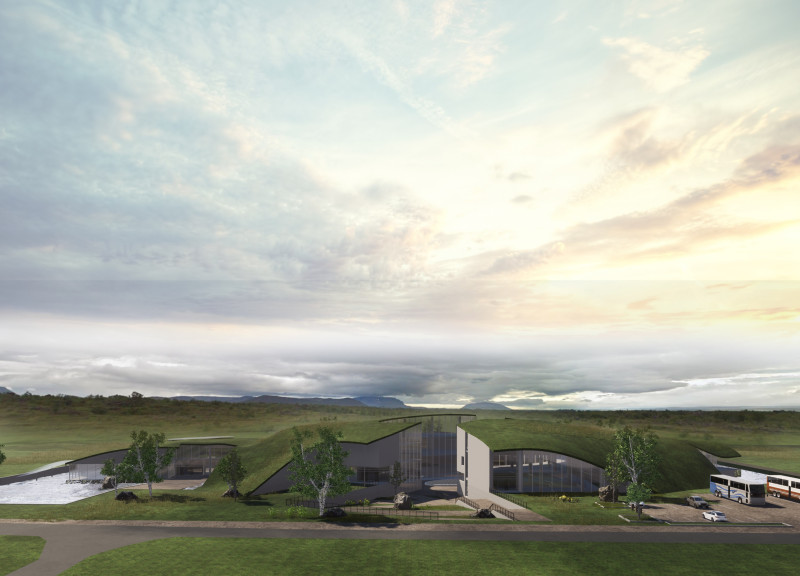5 key facts about this project
The design is situated in the stunning landscape of Iceland, aiming to create a space that connects visitors with the surrounding nature. It focuses on the accessibility of the outdoors, contrasting the routine structures found in busy cities. The design invites exploration and highlights Iceland's geological features, particularly the formation of volcanoes. By integrating these elements into the natural environment, it encourages engagement and provides an opportunity for visitors to reflect on the landscape.
Design Concept
The main idea of the design revolves around five separate masses, each illustrating different stages in the formation of volcanoes. This layout allows for changes in elevation and incorporates water features, making use of the site’s natural topography. The forms act as key points in the experience, guiding movement and interaction. Visitors are encouraged to explore and engage with the features both physically and visually as they navigate through the space.
Spatial Interaction
The way the five masses are framed is another important aspect of the design. Each mass directs attention to specific natural features, encouraging visitors to consider what is contained within the boundaries of the structure and what lies beyond. This creates a relationship between the built elements and the expansive nature surrounding them. The arrangement fosters an immersive experience, prompting reflection on how humans relate to their environment and the geological forces at work in shaping it.
Surface and Water Elements
In addition to the solid forms, the design incorporates water spaces that complement the masses and add a sense of movement to the overall layout. These water features create a connection between the solid and fluid elements, encouraging interactions that enrich the experience. The presence of water not only enhances the aesthetic appeal but also serves to emphasize its significance in the geological context of Iceland. The reflective surfaces allow for varying visual experiences, inviting visitors to engage with both the natural and the constructed.
The design creates a carefully considered experience that merges human activity with natural forces, allowing for meaningful interaction with the landscape. Each architectural mass stands as a reminder of natural processes, offering visitors multiple ways to engage and interpret their surroundings. The result is a thoughtful exploration of the relationship between nature and architecture in a unique geographical setting.






















































